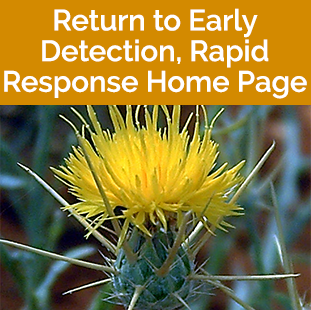Yellowflag Iris
(2A, common in isolated areas of Montana)
(Iris pseudacorus)
Quick ID
- Yellow flowers with 3 downward-pointing sepals and 3 upward-pointing petals
- Rhizomes contain black sap
- Plants are often 3 to 5 feet tall

Map Courtesy of Montana Natural Heritage Program, Yellowflag Iris – Low Suitability: 9% of Montana, Moderate: 2%, Optimal: 2%. Larger image.
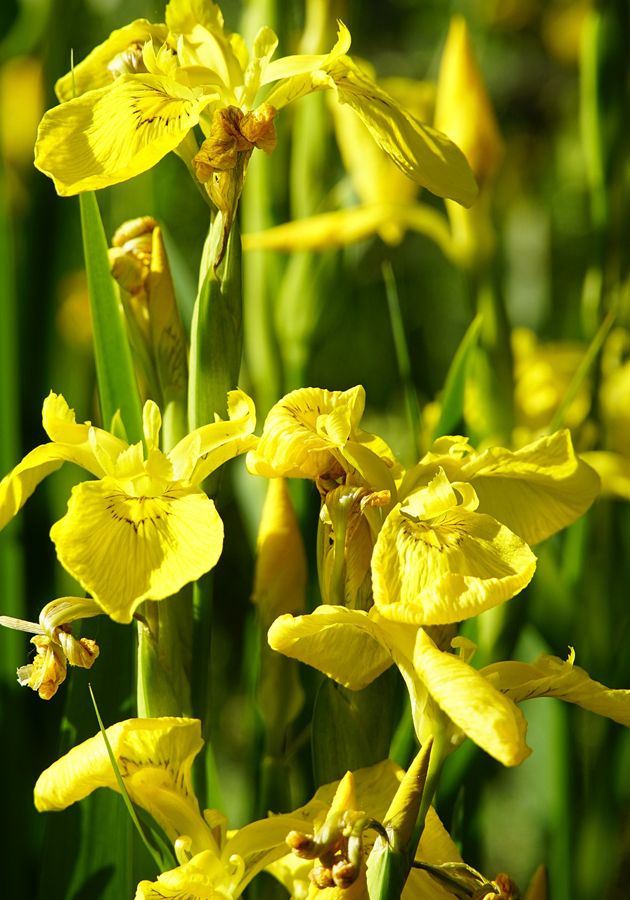
Video Information
Weed Images
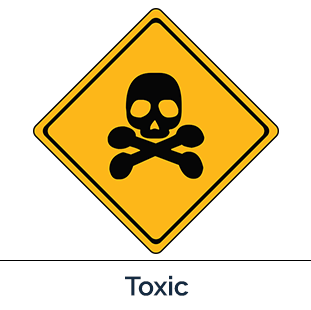
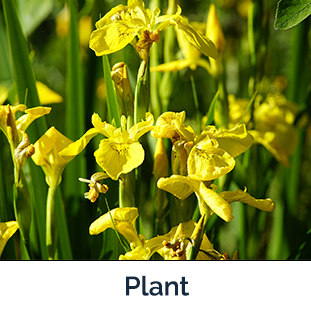

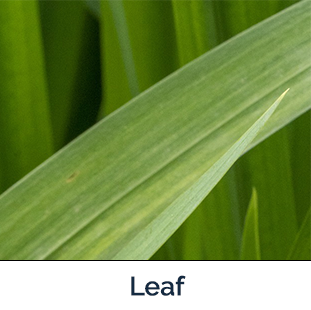
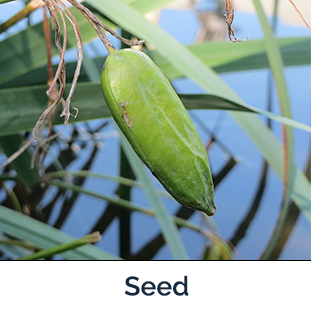
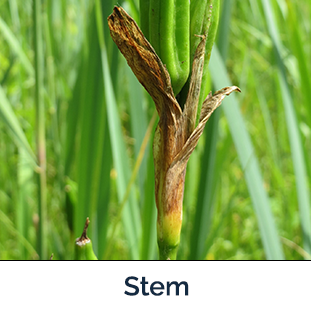
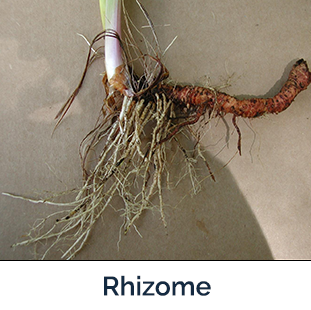

Weed Specifications
| Type | Information |
|---|---|
| Toxicity | All parts of the plant are toxic to animals and can also cause severe skin irritation and allergic reactions in humans |
| Best Management Practices |
Small clumps can be dug out but it’s only effective if the entirety of the rhizomes are removed, repeated mowing can help, specialty aquatic herbicides can be used with proper care *See additional documents below |
| Habitat | Shorelines, ditches, streambanks, floodplains, areas with shallow water, low lying wetlands, moist meadows |
| Root | Rhizomes that form dense mats |
| Leaves | Linear, sword-like, erect, flat, bright green, raised midrib, emerge from the ground in a fan-like arrangement |
| Lifespan | Perennial |
| Similar Looking Plants | Rocky Mountain iris, but Rocky Mountain iris has blue to lavender flowers and is a smaller plant, and cattail, which has round leaf bases, instead of the flat leaf bases yellowflag iris has |
| Important Information | Established throughout most of the US, escaped ornamental that is still escaping and is often transplanted by homeowners, reproduces from rhizomes and seeds and seeds can be spread long distances with water flow, changes ecology by capturing sediment, chokes out beneficial vegetation, clogs irrigations systems and streams and can narrow waterways |

